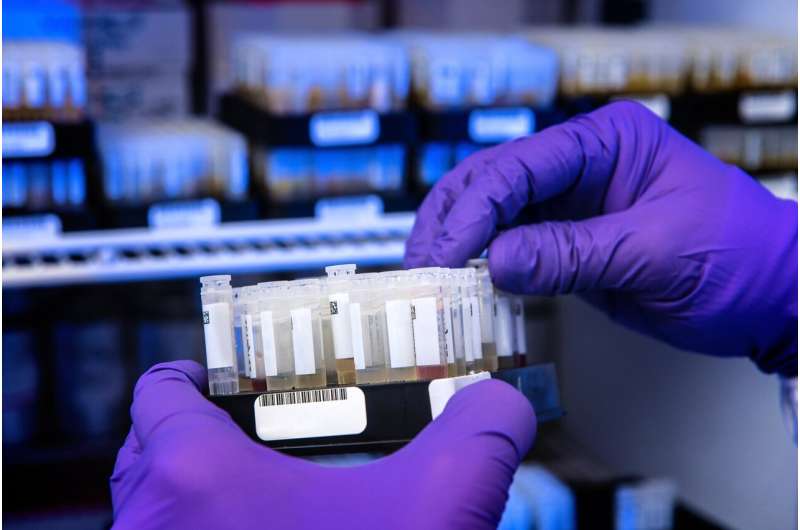Home » Health News »
Researchers study SARS-CoV-2 antibodies in asymptomatic and symptomatic individuals

MUSC Hollings Cancer Center researchers added to the understanding of the protective immune response against the SARS-CoV-2 virus in a study published in April in iScience. The team found that approximately 3% of the population is asymptomatic, which means that their bodies can get rid of the virus without developing signs of illness.
The researchers screened more than 60,000 blood samples from symptomless individuals in the southeastern U.S., including Georgia, South Carolina and North Carolina, for the IgG antibody to the viral spike protein.
What began as a highly collaborative statewide effort to detect SARS-CoV-2 accurately when tests were lacking has led to discoveries. Last year, Shikhar Mehrotra, Ph.D., professor and scientific director of the FACT-accredited Clean Cell Therapy Unit at MUSC, led the task of developing a method to detect COVID-19 infections rapidly in patients.
The research team developed an orthogonal ELISA-based serological assay, which allows for large-scale antibody testing. While commercial antibody tests are now more readily available, the work has excellent strength in findings because of the exceptionally large sample size, said Mehrotra. Studies such as this shed light on the current unknowns, such as the longevity of the antibodies, their ability to protect from repeat infections and the protective concentration (titer) of neutralizing antibodies.
“As cancer researchers who focus on understanding the role of the immune system in cancer, we are well-positioned to tackle the difficult immunity questions raised by COVID-19. This work was a concerted effort with the highly skilled scientists in the Clean Cell Facility who processed this large sample population,” said Mehrotra.
Disease-specific antibody research is necessary to understand protective immunity and understand more fully the prevalence of infection and immune responses to both the virus and vaccines. The team found that high levels of anti-S IgG, the antibody that detects the spike protein, and anti-RBD IgG, the antibody that detects the receptor-binding domain of the spike protein, strongly correlated with neutralizing activity, meaning they defend the person from the virus. Antibodies from 94 hospitalized COVID-19 patients were also assessed: the data showed that compared to asymptomatic individuals with high anti-S IgG, sick patients had decreased antibody responses and reduced neutralizing activity.
The data showed that younger (30 years old and younger) versus older individuals had the highest antibody responses. Also, the findings matched other reports indicating that COVID-19 is disproportionately high in African Americans in southeastern states.
In the future, this tool can be used to monitor antibody levels upon vaccination or as a screening tool for therapeutic convalescent plasma. Since analyzing neutralizing antibodies in all patients and asymptomatic individuals is challenging, the results indicate that IgG anti-S or RBD can act as a surrogate in determining neutralizing activity in individuals tested for SARS-CoV-2 infection or vaccine response.
More studies are needed to understand the differences between neutralizing antibodies in asymptomatic and hospitalized individuals. Follow-up studies can be done with this extensive data set; for example, the biomarkers between asymptomatic and symptomatic individuals can be compared.
The increase in cross-disciplinary research reveals how novel strategies can accelerate research across medical subdisciplines. The development of mRNA-based COVID vaccines is anticipated to boost cancer research developments. For two decades, scientists have been trying to use RNA as a therapeutic but with little success, since RNA naturally degrades quickly. Now, with the COVID vaccines, it is apparent that stabilizing techniques are feasible and can be translated to other applications, such as cancer vaccines targeting markers on cancer cells or epitopes.
Source: Read Full Article



